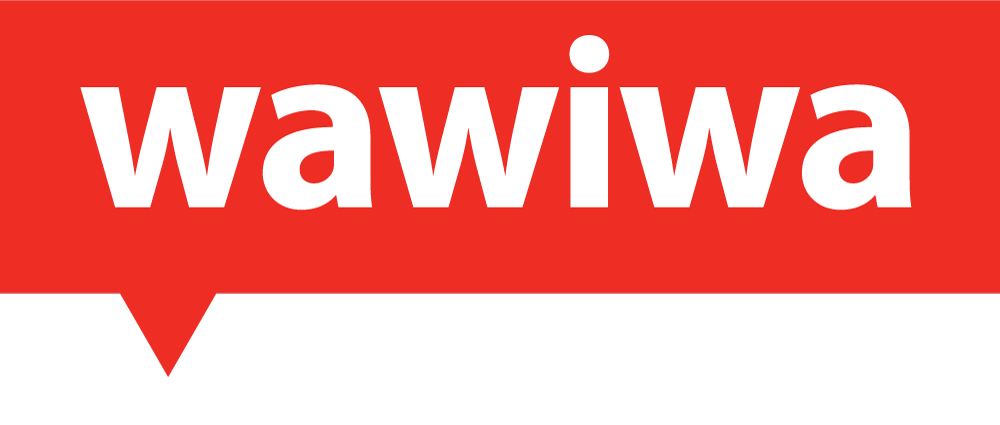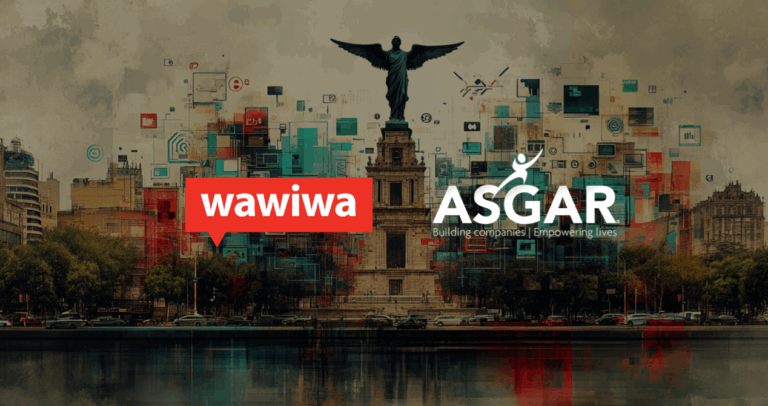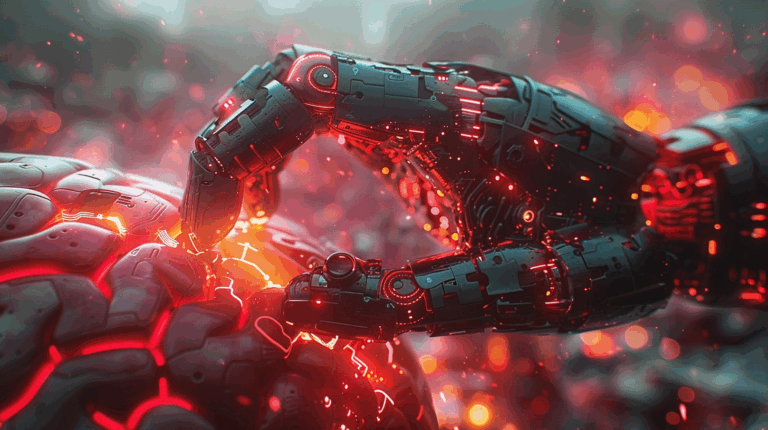What does a day in the life of a digital graphic designer look like nowadays? From sketching initial concepts to applying the final touches, this blog explores the tasks that fill their day, the challenges they face, and the creative solutions they craft. This glimpse into their world will enlighten aspiring designers and captivate anyone interested in the behind-the-scenes of digital artistry.
Understanding What a Digital Graphic Designer Does
A digital graphic designer is a creative professional specializing in visual content creation using digital tools and software such as Adobe Photoshop and Adobe Illustrator. These tools allow designers to create sophisticated graphics, intricate layouts, and detailed illustrations that are essential for digital media. Digital graphic designers create everything from website graphics and online ads to social media images and digital billboards. The essence of their job is to communicate ideas that inspire, inform, and captivate consumers through digital artwork.
Digital graphic designers are commonly confused with UX/UI designers or traditional graphic designers, and although their jobs are somewhat similar, differences exist. Digital graphic designers prioritize the visual impact of content, focusing on color schemes, typography, and image layouts that capture the audience’s attention. In contrast, UX/UI designers aim to optimize the user experience and functionality of digital interfaces through product design.
While traditional graphic designers may also create beautiful visuals, their expertise often extends to print and other physical media, which requires knowledge of additional production techniques.
Digital graphic designers operate in a purely digital landscape, where they must keep up with the latest digital technologies and trends to create compelling, modern content that stands out online. This specialization allows them to spark digital marketing campaigns, engage in social media, and bring to life online platforms where visual content is crucial for success.
Daily Responsibilities of a Digital Graphic Designer
A digital graphic designer’s day-to-day job is both varied and dynamic, focusing primarily on creating visual content that appeals to digital audiences. They might start by brainstorming concepts for a new digital campaign, looking for inspiration, sketching preliminary designs, or revising existing graphics based on client feedback. For example, they may design a set of web banners for an online advertising campaign or create animated graphics for social media posts. Each task requires an understanding of digital design principles, the characteristics and requirements of the medium, and an ability to translate abstract ideas into visually compelling digital art.
In the soft skills section, digital graphic designers often collaborate with other team members, such as marketing managers, content writers, and web developers, to ensure that all visual elements align with the company brand and the broader project goals. This collaboration might involve adjusting designs to fit with web development specifications or altering an ad’s layout to better accommodate text. They also might spend time testing graphic designs across different devices to ensure consistency and functionality, particularly for responsive web design where visuals must adapt to various screen sizes. If you’ve ever had a debate with friends about taste or fashion, you’d understand the delicate skill set that graphic designers need to develop in order to satisfy internal clients, bridge disagreements, and bring their own flare at the same time. Listening skills, meditation, negotiation, presentation, and convincing skills are among the ones required to perform well as a designer in a team.
On a typical day, a digital graphic designer might receive a brief from a client who wants a fresh visual identity for their startup. The designer starts by scheduling a meeting to discuss the client’s vision, target audience, and key brand elements. After gathering insights, she begins researching industry trends and competitor designs to ensure the new identity stands out. With this foundation, the designer sketches preliminary concepts, experimenting with different color palettes, typography, and logo designs. These concepts are then digitized and refined from sketches into polished prototypes. Once the designer has a good enough draft, she gets feedback from the client and makes adjustments to align more closely with the client’s needs. She finalizes a set of potential logo designs, color palettes, fonts, and basic style guidelines, which are presented to the client for approval. Once a direction is approved, the designer prepares the final files and a brand guideline document. This document ensures that the client’s brand identity is consistent across all future designs and applications.
An interesting fact is that graphic designers rate their career happiness at 3.4 out of 5, placing them in the top 39% of careers in terms of job satisfaction. What contributes to their satisfaction is that they enjoy the creativity and problem-solving aspects of the job. Graphic design often involves working on diverse projects, keeping things fresh and engaging.
However, the role of a digital graphic designer is not without its difficulties. Staying updated with technology and software can be challenging, as digital platforms and design tools are constantly changing. Balancing creativity with practical application and client demands also poses a recurring challenge, as does ensuring that their designs stand out as audiences are bombarded with visual information. Even when they are not feeling particularly inspired, designers must consistently deliver creative solutions, a demand that can be as taxing as it is rewarding.
Essential Tools for Digital Graphic Designers
Digital graphic designers rely on a variety of tools to create compelling visual content, with Adobe Illustrator, Photoshop, InDesign, and Canva being fundamental to their workflows. Adobe Illustrator is a powerful software used primarily for creating vector graphics. This includes logos, icons, and complex illustrations that need to scale without losing quality. Its extensive tools allow designers to craft detailed and precise graphic elements that are essential for branding and digital media.
Adobe Photoshop is renowned for its robust features in photo editing and raster graphic creation. Photoshop is used to manipulate and enhance photographs, create web layouts, and composite images from multiple sources. Its layer-based editing system enables designers to create detailed and layered illustrations, providing flexibility in integrating various visual elements into a cohesive design.
Adobe InDesign is tailored for layout design, especially for projects involving multi-page formats like magazines, brochures, and eBooks. It excels in typesetting and allows designers to control the layout with precision, ensuring that all elements are aligned and beautifully presented.
Canva, on the other hand, is a user-friendly graphic design tool that is perfect for both beginners and professionals looking to quickly produce high-quality visual content. Its intuitive drag-and-drop interface simplifies the design process, making it accessible to those without extensive graphic design experience. Canva provides a vast library of templates, images, and fonts, enabling users to effortlessly create everything from social media graphics and presentations to posters and flyers. This makes it an invaluable tool for designers needing to produce attractive, effective designs under tight deadlines.
Alongside these tools, understanding the principles of gestalt theory is very important for digital graphic designers. Gestalt theory emphasizes how humans perceive visual elements as whole forms rather than just individual parts, which is essential in creating designs that are visually appealing as well as effective in communicating messages clearly and effectively. Proficiency of these tools, combined with an understanding of design principles like gestalt, equip digital graphic designers to perform in their field and produce work that resonates with their audience.
Digital Graphic Design in the Generative AI Era
Generative AI is transforming digital graphic design, offering new tools and possibilities that are reshaping how designers work. Generative AI algorithms can produce original content from existing data, such as images, texts, and videos, thereby streamlining the creative process. For example, tools like MidJourney and DALL-E use generative AI to generate images based on textual descriptions, providing designers with rapid, diverse visual content that can inspire or directly be used in their projects. This technology speeds up production and expands the creative boundaries, allowing designers to explore a wider range of ideas and concepts quickly.
As generative AI continues to evolve, its impact on the field of digital graphic design is profound. Designers are now able to automate routine tasks, such as resizing images and basic layout formatting, freeing up more time for the creative aspects of their work.
Despite the impressive capabilities of generative AI, human designers remain essential in the digital graphic design process. While AI can generate numerous visual options and execute repetitive tasks efficiently, the human touch is crucial for interpreting client needs, understanding cultural contexts, and making creative decisions that resonate with specific audiences. Human designers bring a level of empathy, ethics, and strategic thinking that AI cannot fully replicate. They are responsible for guiding the creative direction, ensuring that the final outputs align with strategic goals and maintain brand integrity.
Career Paths and Growth Opportunities for Digital Graphic Designers
The field of digital graphic design offers a diverse range of career paths that cater to different interests and skill sets. Many designers choose to specialize in particular areas, such as web design, branding, or animation. This specialization often leads to becoming a sought-after expert in that niche, opening doors to high-profile projects and clients.
For those inclined towards flexibility and variety, freelancing is a popular option, with about 90% of graphic designers choosing this career path. Freelance digital graphic designers have the freedom to choose their projects and clients, often leading to a more varied portfolio and a broader skill set. The average annual salary for digital designers in the US exceeds $80,000, making it a financially rewarding option. Freelancing also allows designers to work remotely, providing a balance between professional and personal life that can be highly desirable. This flexibility also enables them to serve clients from anywhere in the world, further expanding their opportunities and exposure in the global marketplace.
Alternatively, digital graphic designers can pursue positions within established companies, from tech startups to multinational corporations. They can advance to higher roles such as design team manager, creative director, or even VP of Design, overseeing broader creative processes and strategic decisions. Designers in these settings are likely to collaborate with large teams on big projects, which can be rewarding and offer significant professional development. Whether opting for freelancing, specializing, or working within a corporate structure, digital graphic designers have ample pathways to advance and evolve in their careers.
Wawiwa’s Graphic Designer Program
Wawiwa is a global tech education provider offering reskilling and upskilling programs to various tech and business jobs. Wawiwa reskills people with no design background to sought-after jobs as Digital Graphic Designers, UX/UI Designers, Digital Marketing Specialists, and other desired tech professions.
Wawiwa’s Digital Graphic Designer Program gives students the skills and tools to become job-ready Graphic Designers in just 6 months. During the program, students develop knowledge of graphic design principles and techniques. They learn how to effectively use design software, mastering tools like Adobe’s Photoshop, Illustrator, and InDesign, to bring their creative vision to life. They also learn how to work with Generative AI tools for graphic design and visual creation, augmenting creativity and increasing productivity.
The demand for Digital Graphic Designers continues to grow, making it a promising career choice. Companies are increasingly seeking skilled designers to enhance their online presence. It’s predicted that there will be a 16% YoY increase in web developer and digital interface designer jobs by 2032, reflecting the addition of approximately 34,700 positions. This growth outpaces many other fields, underscoring the value and potential of a career in digital graphic design.



